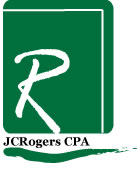IRC § 179D. Energy Efficient Commercial Buildings Deduction
December 16, 2010
Legal Analysis:
Section 1331 of the Energy Policy Act of 2005, Pub. L. No. 109-58, 119 Stat. 594 (2005), enacted §179D of the Code, which provides a deduction with respect to energy efficient commercial buildings. 26 USC §179D(a) allows a deduction to a taxpayer for part or all of the cost of energy efficient commercial building property that the taxpayer places in service after December 31, 2005.
Energy efficient commercial building property:
Section 26 USC §179D(c)(1)
defines the term "energy efficient commercial building property," as property…(4) Which is certified in accordance with I.R.C. § 179D(d)(6) as being installed as part of a plan designed to reduce the total annual energy and power costs with respect to the interior lighting systems, heating, cooling, ventilation, and hot water systems of the building by 50 percent or more in comparison to a reference building which meets the minimum requirements of Standard 90.1-2001 using methods of calculation under subsection (d)(2).
§ 179D:
§ 179D(c) Definitions. For purposes of this section-- (1) Energy efficient commercial building property. The term "energy efficient commercial building prop-erty" means property--
(A) with respect to which depreciation (or amortization in lieu of depreciation) is allowable,
(B) which is installed on or in any building which is-- (i) located in the United States, and (ii) within the scope of Standard 90.1-2001,
Standard 90.1-2001:
Standard 90.1-2001 applies broadly with respect to all buildings — new or existing — except single-family homes and low-rise residential buildings (i.e., three stories or fewer above grade). The §179D deduction, therefore, is available with respect to high-rise (greater than three stories above grade) apartment buildings.
Certification:
Section 26 USC §179D(d)(6), in general, states the elements relating to Certification under the code:
(A) The Secretary shall prescribe the manner and method for the making of certifications under this section.
(B) Procedures. The Secretary shall include as part of the certification process procedures for inspection and testing by qualified individuals described in subparagraph (C) to ensure compliance of buildings with energy-savings plans and targets.
(C) Qualified individuals. Individuals qualified to determine compliance shall be only those individuals who are recognized by an organization certified by the Secretary for such purposes.
Qualified individuals:
Individuals qualified, under 26 USC §179D(d)(6)(C), to determine compliance, are those recognized by an “organization” certified by the Secretary for such purposes. Since Treasury Regulations under this Revenue Code have not yet been published, IRS Notices 2006-52 (2006-26 I.R.B. 1175) and 2008-40 (2008-14 I.R.B. 725) serve as the only official guidance regarding this tax deduction.
Notice 2006-52 states that a qualified individual:
(1) Is not related, (within the meaning of §45 (e) (4)) to the taxpayer claiming the deduction under § 179D;
(2) Is an engineer or contractor that is properly licensed as a professional engineer or contractor in the jurisdiction in which the building is located; and
(3) Has represented in writing to the taxpayer that he or she has the requisite qualifications to provide the certification required under section 4 of this notice (in the case of an individual providing the certification) or to perform the inspection and testing described in section 4.05 of this notice (in the case of an individual performing the inspection).
Related Persons:
The related party prohibition for “Qualified Individuals” is found in Section 5.05 of IRS Notice 2006-52 (2006-26 I.R.B. 1175) and states “Is not related, (within the meaning of §45 (e) (4)) to the taxpayer claiming the deduction under § 179.” The reference to section 26 USC §45 (e)(4) in Notice 2006-52, relates to an employee relationship between the taxpayer and the “Qualified Person” and defines a related party as being a single employer under the Regulations under section 26 USC §52(b), which relates to employees being under the common ownership and control of related entities.
This section does not mention the relationship between the “Qualified Individual,” and the original lighting contractor, which if independent, not an employee of a controlled group of entities related to the taxpayer of common ownership and control, and not an employee of that taxpayer, probably would not be considered a related party under the terms of this section either. The intent behind this provision seems to be directed toward preventing companies (taxpayers) from using their own employees or employees of controlled entities to sign off on certifications for their own benefit. Moreover, the related party provision referenced in Section 5.05 of IRS Notice 2006-52 (2006-26 I.R.B. 1175), applies to the relationship between the “Qualified Person” and the “Taxpayer” claiming the deduction on a tax return.


